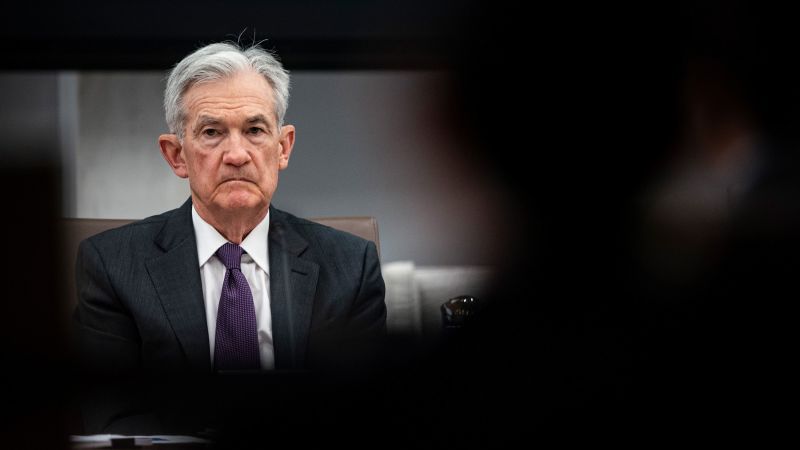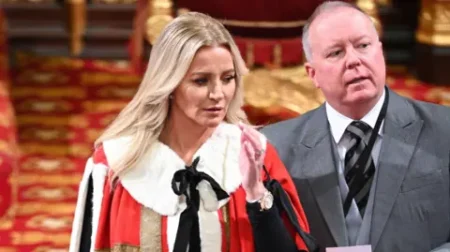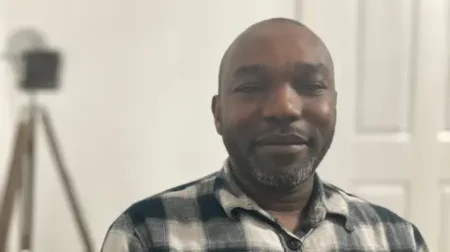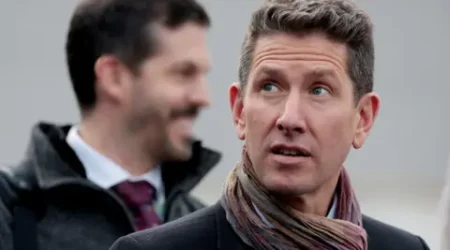President Donald Trump has publicly criticized Jerome Powell, the Chair of the Federal Reserve, for failing to reduce interest rates in response to economic pressures. This criticism has intensified over the course of several months, with Trump even hinting at the possibility of firing Powell should he fail to meet the president’s expectations. Recently, the renovation project, which involves a $2.5 billion upgrade to the Federal Reserve’s headquarters located in Washington, D.C., has emerged as a potential legal ground on which Trump could attempt this unprecedented action.
In light of these developments, Trump claimed last week that while it was “highly unlikely” he’d pursue the termination of Powell, he nonetheless left open the possibility by citing a notion of “fraud.” The potential removal of Powell would mark a historic first in the central bank’s 111-year history and carry significant implications for financial markets and broader economic stability. Yet, removing Powell does not guarantee an immediate drop in interest rates, as decisions at the Federal Reserve are made collectively by a committee of 12 members, of which Powell is only one.
It is critical to understand the mechanisms behind the Federal Reserve’s leadership structure and the removal processes for its officials. Top White House officials have raised concerns about mismanagement regarding the Fed’s renovation project, alleging significant cost overruns. Certain Republican lawmakers have even asserted that Powell misled Congress during a recent appearance when he stated that some necessary upgrades would not be included in the renovation plans.
Earlier this month, the Federal Reserve made a proactive move by publishing a Frequently Asked Questions page on its official website, detailing the nuances of the renovation project, including the reasons for the costs surpassing initial budgets. Furthermore, Section 10 of the Federal Reserve Act establishes that the president has the authority to remove a member of the Fed’s Board of Governors only “for cause.” This definition is broadly interpreted to cover malfeasance, neglect of duty, or inefficiency, but not simple policy disagreements, which are prevalent in Trump’s case regarding Powell’s cautious approach to interest rate adjustments.
Powell holds three integral roles: he is a member of the Fed’s Board, the Chair of the Board of Governors, and the Chair of the Federal Open Market Committee (FOMC)—which is the designated group within the Fed that determines interest rate policies. It remains ambiguous whether a for-cause removal could be applied to his positions beyond being just a board member. Peter Conti-Brown, a noted scholar from the University of Pennsylvania, mentioned in his analysis that while the law offers no clarity on whether the president can entirely “fire” the Board Chair and effectively strip him of his chairmanship, it also appears that past presidents have refrained from acting on this possibility, suggesting ambiguity in the law.
In the event that Trump were to order Powell’s removal, Powell would be granted the opportunity to respond. However, there are uncertainties regarding the timeframe allocated to him for this response. Lev Menand, an associate professor at Columbia Law School, highlighted that the intricacies of a for-cause removal have not been navigated in a century, rendering it difficult to ascertain response protocols.
If Powell were removed, he could pursue legal action claiming his termination was unjust. He would need to establish sufficient grounds for continuing in his role as chair of the Federal Reserve. The process of litigation following a removal order could extend for months, potentially culminating in a ruling from the Supreme Court, especially given the complexity of the legal framework surrounding such removals.
The timeline could be so extensive that it might extend beyond Powell’s term, which is projected to expire in May 2026. Should the courts issue an injunction during the litigation process, it would allow Powell to retain his post as chair throughout the dispute. Conversely, if the courts decline to issue a preliminary injunction, the Vice Chair of the Federal Reserve, Philip Jefferson—who was appointed to the board in 2022 by former President Joe Biden—would assume Powell’s responsibilities, overseeing the central bank’s daily operations and policy decisions.
In conclusion, the potential for Trump to fire Powell illustrates a complex and contentious intersection of politics and economic governance. The legislative and legal frameworks governing such a decision remain nebulous, raising significant questions about the roles of leadership within the Federal Reserve, the ramifications for monetary policy, and the judicial interpretation of executive power.










